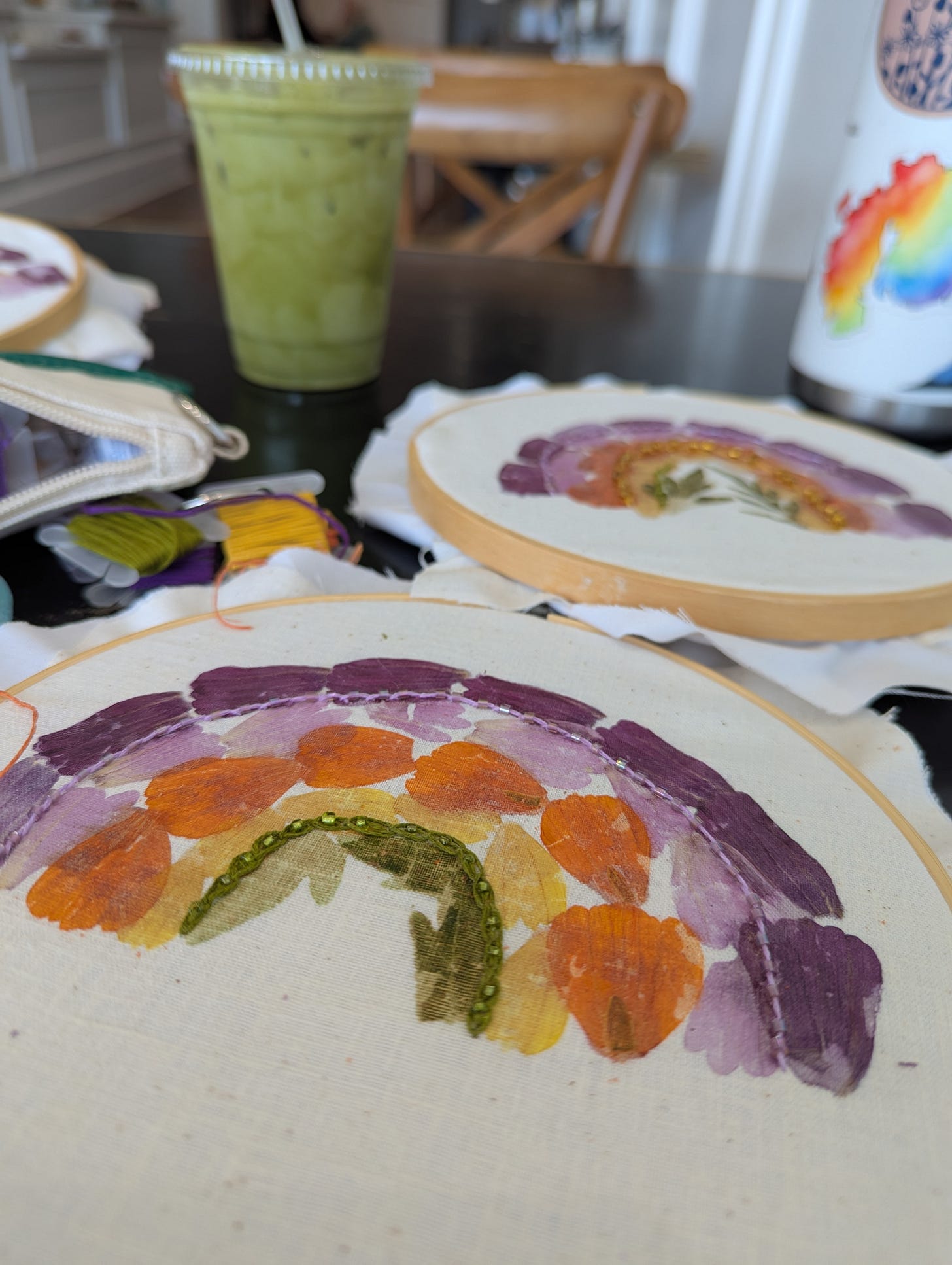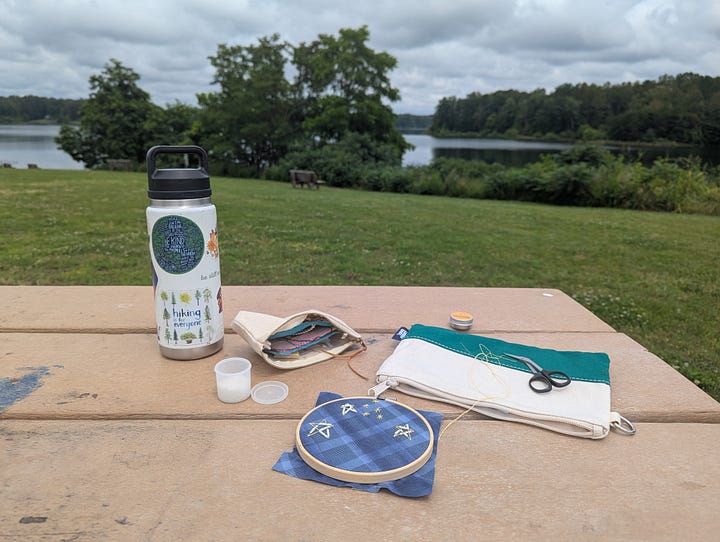Tentatively, I take out my supplies from my backpack. Everyone around me has their attention elsewhere; locked on their screens of various sizes or engaged in conversation. To me, I stand out, unloading art supplies in a small coffee shop. But, it is “Maycember” and time is of the essence. My self-designed teacher gifts need to be delivered in two days and I have a somewhat inconvenient amount of time before preschool pick up.
I am two beaded stem stitches in when the barista delivers my matcha. She seems genuinely excited to see someone making art in the space, exclaiming, “Oh how beautiful! What are you making?”. After a brief explanation about teacher gifts she wishes me well and heads back behind the register. Part of me wishes she asked more about my process, the other part grateful to be back in my solitude. I am somewhat surprised that no one else comments on my work throughout the rest of my time in the shop, either too preoccupied with their work or too shy to engage.

Throughout the past few months I have worked on my fiber pieces in public: in the bakery where I sell my art, the public library, a park bench while my kids play with grandparents, and this small coffee shop. Most of the time, I stitch alone; sometimes a friend joins me. Often I land in these public settings because of convenience: if I go to the public library 8 minutes from my kids’ school, I get an extra 20 minutes to work; if I stitch at the bakery, I can catch up with my friends who work there at the same time.
Sitting under a “Capitalism Doesn’t Care About Your Creativity” sign, stitching with a friend at the bakery, I realized how radical our act of creating was. In a society that values speed, we partook in a slow art form. Where many prioritize perfection, we experimented with different methods, working together to create something clearly and joyfully handmade. As we chatted about how ugly and hateful our species has become, we held beauty in our hands, proving to ourselves it could still exist.
While many people close themselves off to random interactions in public, we had opened ourselves up. Our bodies were not hidden behind a screen, our attention seemed more available, our hands busy interacting with materials rather than a mysterious entity on the other side of a keyboard. While our act was personal and private in the motivation and design, we had inadvertently invited the “public” to comment on our art. And these interactions proved revolutionary in and of themselves. They fostered joyful surprise, connection, and curiosity. Three things that seem in short supply in our current societal climate.
This past weekend, millions of people across the United States, and the globe, participated in the No Kings Protest: using their feet, voices, and very creative signs to call out the misuse of power happening in the White House. I desired to go, but recognize that my season of life and my body were not called to resist in this way. To put it bluntly: I could not risk a flare in my chronic illness, my children are on summer break and I am responsible for their care falls in more ways that usually during the summer.
I have long seen raising empathetic, curious children who include all beings, human and non-human, in their sphere of importance as some of the most meaningful work I can do. (This specific phrasing came to me this winter, but really, Whitney was right: the children are the future.) It’s the long game, for sure, with no guarantees and a whole lot of exhaustion. Now, I feel that I have a smaller, more immediate form of resistance in this season: making art in public. Centering slowness, beauty, creativity, nature, and connection. I now have a small to-go bag of embroidery supplies with me at all times. You’ll now find me slowly stitching my part of the revolution rather than doom scrolling.







💖💖💖 you have such a beautiful way with words!